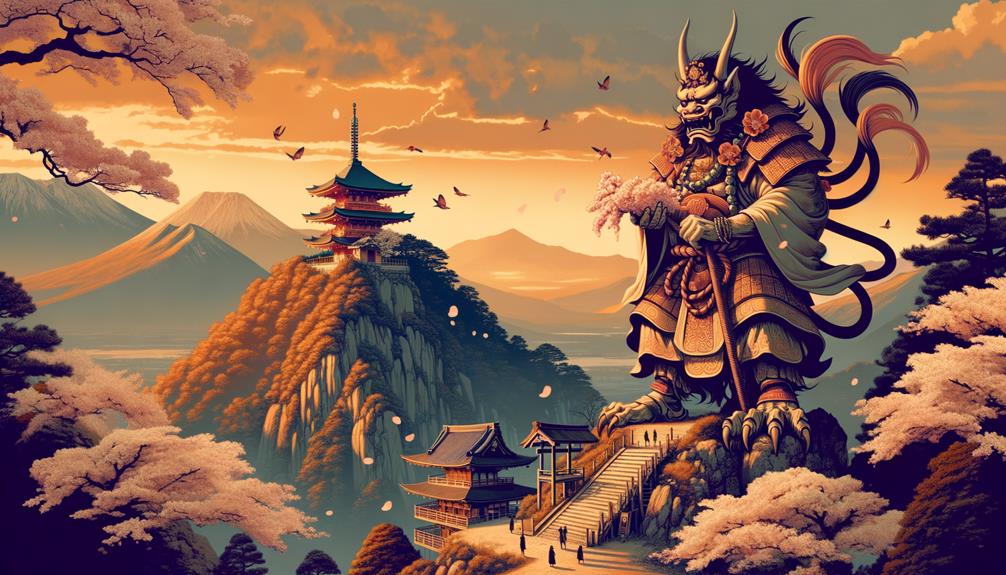At a yearly festival in a quaint Japanese town, it's hard to miss the bright red Tengu masks sported by revellers. These intriguing masks are a nod to the longstanding cultural importance of the Tengu, mythical beings often portrayed as part bird, part human. Rooted deeply in Japanese folklore, the Tengu's image and role have morphed over the centuries. Interestingly, they've gone from being disruptive demons opposing Buddhism to respected protectors and symbols of pride, ambition, and martial arts skills. This transformation isn't just a reflection of religious evolution in Japan, but also a mirror to societal changes. So, what triggered this change of heart? And how does the enduring relevance of the Tengu affect modern Japanese culture and beyond? To tackle these questions, we should journey back to the Tengu's beginnings and disentangle the intricate web of myth, religion, and cultural shifts.
Origins of Tengu in Japan

Let's talk about Tengu in Japan. Now, these aren't just your everyday mythical beings. Picture them as bird-like specters with a red face and a long nose that have left a deep impression on Japanese culture. These demons, rooted in Japanese mythology, have been around since the late Heian period.
Historical Japanese texts tell us about two kinds of tengu. There's the daitengu, representing the classic tengu image with a red face and long nose. Then you've got the kotengu, which more closely resembles a crow. At first, people saw tengu as bringers of chaos and destruction. But, interestingly enough, their reputation flipped during the Kamakura period. They transformed from malevolent spirits into protective deities.
But tengu aren't confined to just mythology and folklore. They've seeped into different aspects of Japanese culture. You can find them in anime, video games, and even recognized in Shintoism as small gods or kami. That kind of change really shows how flexible the image of the tengu has been in Japanese society. It's a testament to the dynamic nature of the tengu's story in Japan. Despite their infamous past, they've become cultural symbols, representing the fears and hopes of the Japanese people.
Tengu's Role in Religious Practices
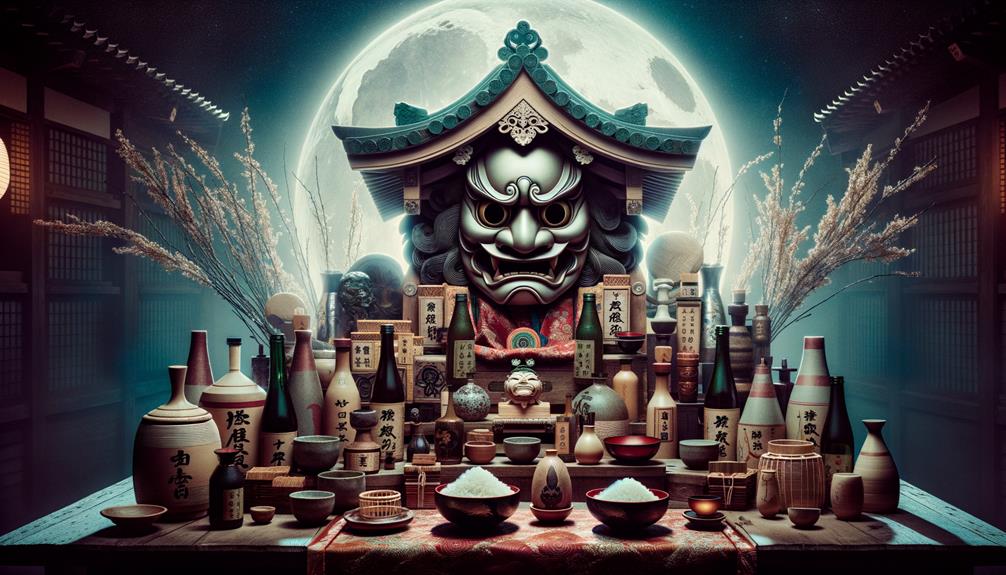
Let's chat about the intriguing role of Tengu in religious customs. These mythical creatures have an interesting backstory. Once thought of as malevolent spirits opposing Buddha, they are now viewed as guardians and symbols of ambition. Their cultural significance is tied to their complex evolution within religious customs.
Tengu were initially linked to arrogance and pride, seen as evil spirits in opposition to Buddha. But as time went on, the way we think about tengu in religious customs started to change. An interesting shift happened during the Kamakura period, where tengu were divided into good and bad categories. A tale from the 18th-century even speaks of a tengu who took on the role of the head of a Zen monastery, looking after and guiding Buddhist monks.
Fast forward to the present day, tengu are recognised for their dual nature. While they're still feared as demonic figures, they're also respected as protectors. This contrast can be seen in the traditional wearing of tengu masks during religious festivals. And even though the word 'tengu' translates to 'heavenly dog', their portrayal often looks more like large, fearsome birds, illustrating their intricate character in religious customs. Their continued appearance in Japanese folklore and popular culture tells us just how vital they are, and how much intrigue they continue to spark.
Symbolism of Tengu in Society
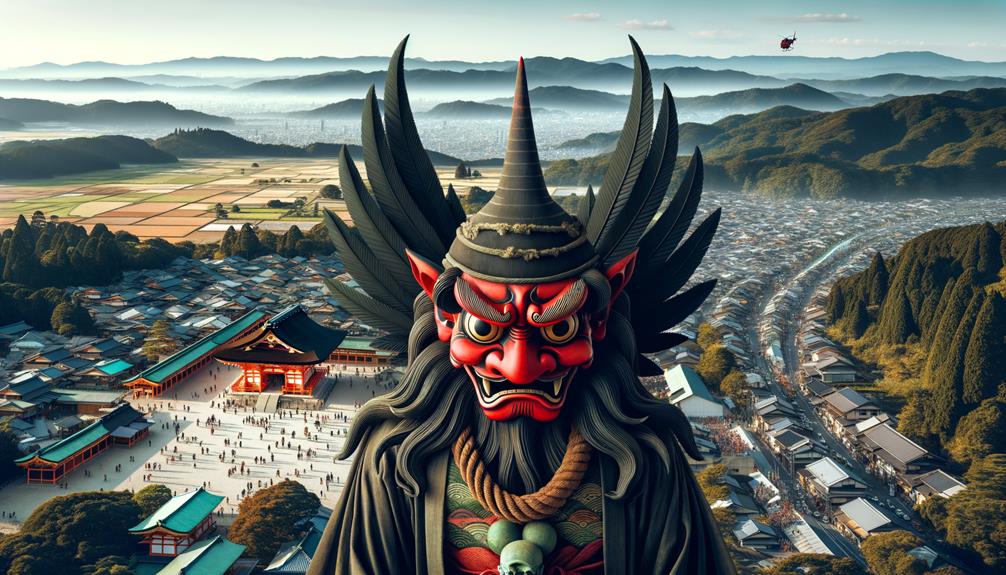
Let's chat about the societal symbolism of Tengu, those mythical creatures that pop up in Japanese folklore. They're not just bird-like beings; they're also mirrors of cultural changes in perception. Tengu started as scary demons, standing against Buddha, but over time, they turned into protective spirits, especially in the Edo period. This change showcases how the understanding and interpretation of these entities evolved in Japanese society.
In the realm of Buddhism, Tengu became icons of pride and ambition, reflecting the human attempt to conquer personal shortcomings. The change in their role from devilish to protective shows just how versatile the Tengu's societal symbolism is. It's a testament to the shifting societal values over time.
These days, you'll see Tengu in all sorts of popular media, like anime and video games. They're even depicted on masks worn during festivals. No matter what type of Tengu is shown, they stand as a strong symbol. As society morphs and grows, so does the symbolism of the Tengu. They're a testament to the ongoing change and resilience of Japanese culture and society.
Tengu Influence on Martial Arts
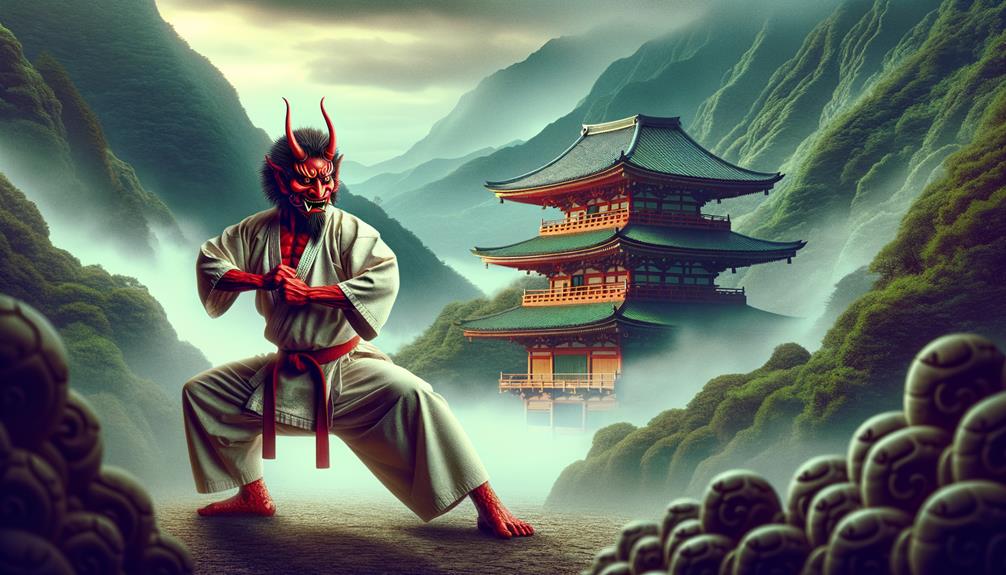
Investigating Tengu's societal symbolism is fascinating, especially when you look at their significant impact on martial arts. These mythical creatures, often shown with a red face and a feather fan, are famous for their fighting skills and wisdom in the public's eye.
- Let's head to Mount Kurama's mountains, where Tengu supposedly live. They're known to have tutored the legendary warrior, Minamoto no Yoshitsune.
- Creatures often referred to as Tengu, like the Crow Tengu, are firmly rooted in martial arts culture. They represent aspiration and the spirit of a warrior.
- It's an intriguing contradiction that Tengu, known as foes of Buddhism in mythology, also serve as martial arts instructors.
- The Tengu's power to stir up winds with their feather fans symbolizes their capacity for causing chaos or wiping out ignorance.
This mix of playfulness and martial knowledge strikes a chord in the martial arts community. Their stories and symbols continue to motivate and guide warriors, highlighting their cultural importance and their mark on martial arts.
Tengu Depictions in Modern Culture
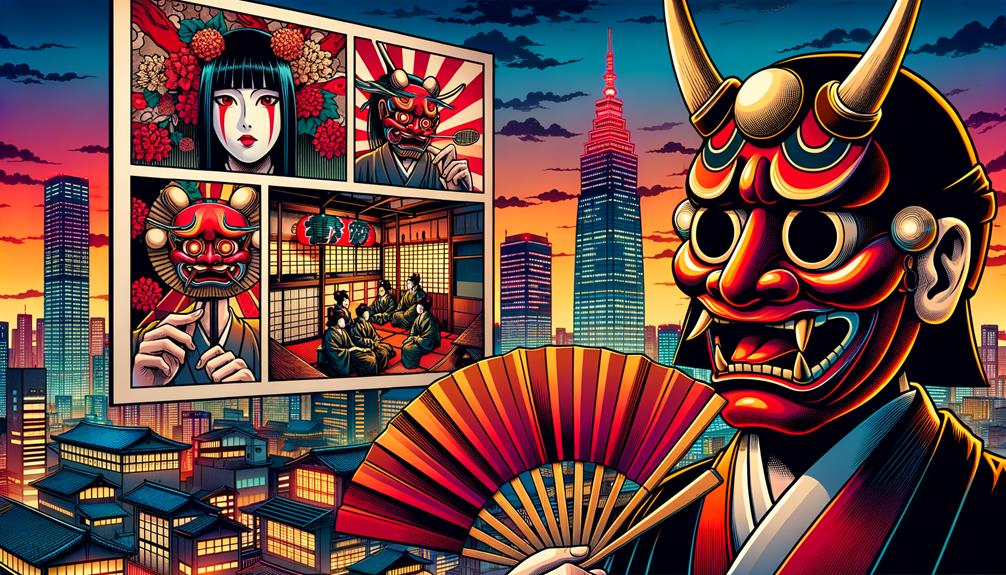
In today's world, Tengu, an iconic creature from ancient Japanese folklore, continues to make its mark. It's not unusual to see Tengu references in mainstream media, including anime and video games. Tengu-themed masks have also become a fashion statement in today's society, often featuring the creature's distinctive nose that harks back to their bird of prey roots.
The "Demon Slayer" anime series, for instance, highlights the Tengu's large wings, harking back to the Kamakura period when the Tengu first made its appearance in Japan as an intriguing creature from Buddhist legends. In the series, the Tengu is shown in service to the abbot, underlining the creature's cultural significance.
The portrayal of Tengu in modern times tends to swing between their demonic side and their role as powerful guardians. These creatures are often shown as peculiar yet captivating, with their long, bird-like noses being a key feature. This blend of ancient myth and modern interpretation keeps the Tengu relevant and intriguing. It shows how folklore can stand the test of time, evolving and thriving even in our rapidly changing world.
Frequently Asked Questions
Why Are YōKai Important to Japanese Culture?
Yōkai, within the context of Japanese culture, hold a significant place. They're not just fantastical beings. Instead, they mirror our own human fears and hopes, transforming into cultural touchstones that provide us with an unparalleled view into the shared consciousness of the Japanese people.
What Is the Cultural Significance of Oni?
You know, Oni hold a pretty interesting place in Japanese folklore. They're kind of like the boogeymen of the culture, representing those scary, unknown things that give us all the heebie-jeebies. But here's the kicker – while they're often painted as the bad guys causing all sorts of chaos and disaster, they're also seen as protectors. Yeah, you heard that right. These demon-like figures are also symbols of protection. It's a wild, but fascinating, contradiction that really says a lot about the intricate layers of life, don't you think?
What Is a Tengu in Japanese Religion?
So, you're curious about the Tengu from Japanese folklore, aren't you? It's a fascinating creature with a rich history. Traditionally seen as a bird-like demon, the Tengu has undergone some changes throughout the years. These beings were once feared as mischievous tricksters, sowing chaos wherever they went. But here's the interesting part: Over time, they've changed. Now, they're often seen as protectors, a symbol of the unpredictable shift between good and evil. This highlights the fluidity of morality in folklore, a concept as intriguing as it is complex.
What Is the Origin of the Tengus?
The Tengus, where do they come from? Well, if we take a trip back through the annals of time, we find their roots firmly planted in Japanese folklore. These creatures aren't your everyday mythological beasts – they have a unique connection to birds of prey. Picture a creature with a striking red face and an elongated nose. That's a Tengu for you! Interestingly, the role they have played within these folk tales hasn't remained static, it's changed and developed as the years have rolled by.

